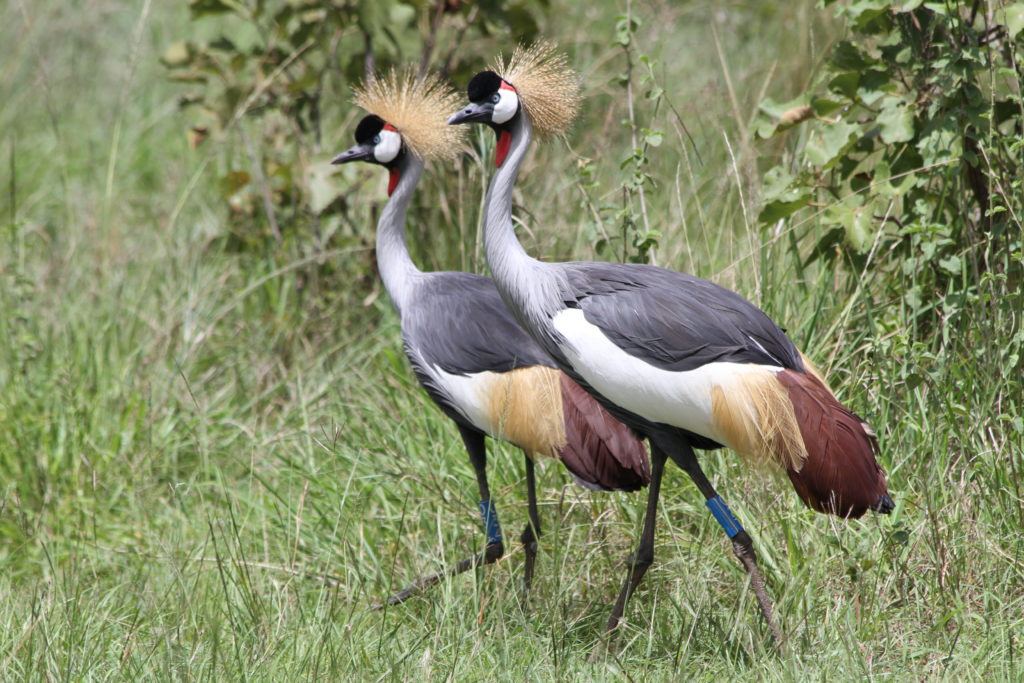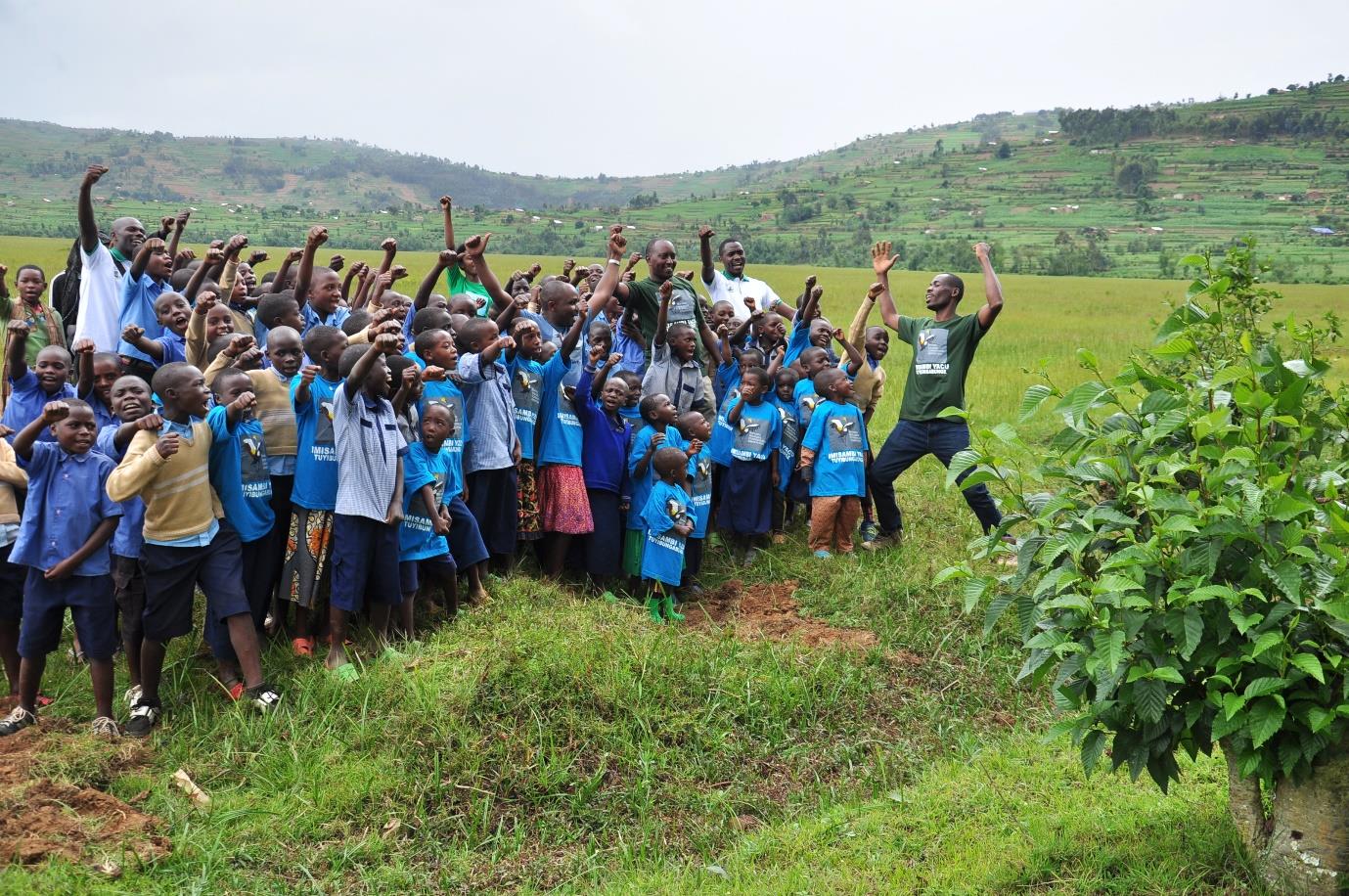When Dr. Olivier Nsengimana was nine years old, his country, Rwanda, was going through one of its darkest times. After the tragic Rwandan genocide, Olivier wanted to contribute to the rebuilding of his country. Twenty five years later, he is now committing to that through the work of his organization, the Rwanda Wildlife Conservation Association (RWCA). In October of 2018, Olivier spoke at WCN’s Expo to share stories about his childhood fascination with the elegant Grey Crowned Cranes, and how the species shaped his life’s mission to protect and restore their dwindling populations. Olivier established RWCA to expand research and conservation projects connected to endangered or threatened wildlife in Rwanda, with a special dedication to the endangered Grey Crowned Crane.
Grey Crowned Cranes are iconic species in the wetlands of Rwanda and serve as indicators of the health of wetland ecosystems. A reduction in the number of Grey Crowned Cranes does not only reflect on the species, but it also suggests that there is a problem with wetland management. From an estimate of more than 100,000 Grey Crowned Cranes globally in 1985, the species has experienced a near 80% decline. The current global population is estimated to be between 26,500 and 33,500. Due to this decline, the Grey Crowned Crane was up-listed from ‘least concerned’ to ‘vulnerable’ in 2009, and then from ‘vulnerable’ to ‘endangered’ in 2012 on the IUCN red list of endangered species.
In Rwanda, the situation is even more dire. The first national Grey Crowned Crane census, led by RWCA, was conducted in 2017. Accurate data was recorded for the first time and showed that the minimum total number of Grey Crowned Cranes in Rwanda was 487. Upon continuation of the census in 2018, Olivier and his team found a total of only 459 Grey Crowned Cranes. However, RWCA just completed their 3rd national Grey Crowned Crane Census in August this year, and 748 cranes were counted throughout the country! It’s important to track census data over a period of 5 or 10 years and longer to better understand any population changes, but this year, results are definitely looking positive.
Olivier believes that this increase in sightings can be attributed to RWCA’s efforts countrywide to stop the illegal trade and protect this species. The RWCA team have now successfully re-introduced 156 captive Grey Crowned Cranes to Akagera National Park where they are enjoying their freedom. To protect these wild cranes, the RWCA team of marsh rangers completed about 400 patrols in 2018. During their patrols, 347 illegal activities were identified by rangers, and were either managed through education and warnings from the rangers, or they were reported to local leaders to assign follow up, warnings, and fines. In the past year, RWCA also organized training workshops with 340 local leaders around Akagera National Park and Rugezi marshland to raise awareness, increase law enforcement, and collaboration in combating the illegal wildlife trade. In 2018, RWCA trained a network of Conservation Champions throughout the country, who have been invaluable in helping to count cranes that were in areas not usually covered by the census team.
In recognition of RWCA’s success thus far, the Rwandan government has awarded RWCA with 21 hectares of land in the capital city to develop a nature reserve and sanctuary for disabled cranes that were previously in captivity. The facility will be called Umusambi Village, and will be opened to the public later this year, to provide access to walking trails and over 100 species of birds in the area. The facility will allow RWCA to expand their education outreach, building on the 7,015 school children that they already engaged with this past year. RWCA is close to moving a group of disabled cranes into Umusambi Village, which will mean that they will be able to achieve their goal of having no cranes kept in captivity in Rwanda.
Looking beyond Rwanda, RWCA’s research has shown that a majority of Grey Crowned Cranes are sighted closest to the borders with neighbouring countries including Uganda, Tanzania, and Burundi. Grey Crowned Cranes have been sighted on several occasions flying between these countries, which may account for some of the fluctuation in census numbers, so RWCA intends to improve cross-national collaboration across borders to monitor these cranes and ensure their safety throughout the East Africa region.
To highlight all of their success, RWCA’s work was recently featured in National Geographic. It’s safe to say that Olivier has lived up to his hope to help rebuild Rwanda, and is now seen as a superhero himself in the eyes of his fellow Rwandans. WCN intends to stay connected with Olivier and RWCA, and we hope you will do the same! If you’re interested in supporting RWCA’s work on Grey Crowned Cranes, you can donate to them here, and stay in the loop on their continued conservation efforts on the RWCA website.



